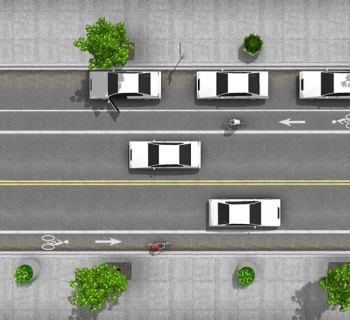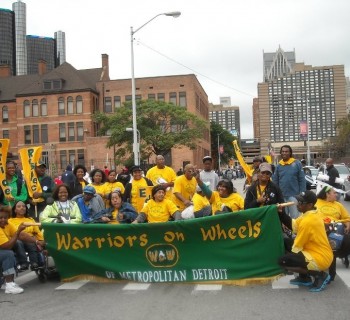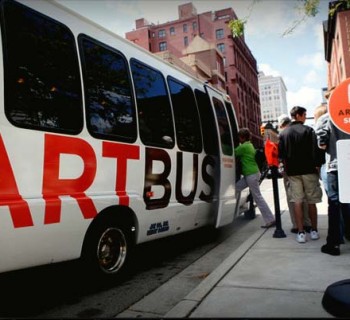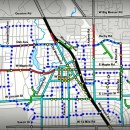On May 9th, at City Hall, in conjunction with National Bike Safety Month, the City of Grand Rapids launched its new campaign: Driving Change aiming to decrease the number of bicycle crashes and fatalities in the greater Grand Rapids area through education and access, and as City Planner Suzanne Schulz stated at the launch, to build a reputation for Grand Rapids as, “not only the ‘furniture city’, but the ‘bicycle safety city’!”
So how does Driving Change better the relationship between motorists and cyclists? Prior to the launch of Driving Change, the city commissioned research to be collected from residents about their perceptions about biking. The research found that residents: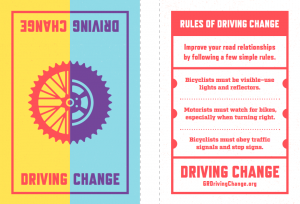
- Are unclear about how they should interact with the 80 miles of new bike lanes introduced since 2010.
- Display a lack of awareness about bike ordinances and laws.
- Harbor a general frustration with the bad behavior displayed by both motorists and bicyclists while on the road.
- Ultimately believe that there is a way for bicyclists and motorists to share the road in harmony.
These findings helped guide the community in envisioning the Driving Change campaign, and propelled the creation and distribution of a Tool Kit to accompany the promotional launch. Instead of just launching a series of billboards, posters, radio and TV ads aimed at educating the public about bike and motorists ordinances, the City of Grand Rapids has partnered with law enforcement, the Grand Rapids Public Schools, the Greater Grand Rapids Bike Coalition, and residents to help distribute physical informational materials that update both motorists and bicyclist about safe road behavior. These materials include:
- Tri-fold pamphlets in both Spanish and English that update both motorist and bicyclist about key road rules
- Laminated informational cards to leave in bike spokes or on windshields
- Colorful posters promoting the “Rules of Driving Change” and the GRDrivingChange.org website
The City of Grand Rapids has provided Michiganders a key road map by making this tool kit accessible, as well as taken a huge step in making sure that everyone on the road is educated. Indeed the success of the Driving Change Campaign lies in the fact that motorists and bicyclists are treated equally, and that a positive message about safety and respect is displayed and upheld by all. As Grand Rapids Mayor Bliss said at a press conference, “Our streets need to be safe for everyone—whether you are riding your bike or driving your car.”
The relationship between bicyclists and motorists can often be tense, but what happens when this relationship is addressed head-on by a city with a targeted, positive, and equal opportunity approach? In 2014, Kent County saw the third-highest number of car-bike crashes in Michigan-- 151-- with two of these resulting in fatalities, and so the City of Grand Rapids sought out a $632,000 grant from the Michigan Department of Transportation (MDOT) to make some change. After two years’ work of researching, planning, and collaborating, Grand Rapids, with the guidance of Alta Planning+Design and Gud Marketing, the campaign was launched.
What would it look like to replicate the Driving Change message in your city or town? All of the campaign materials, as well as Driving Change radio spots and TV advertisements are available online for other residents or communities to view, download, use, and help spread the word. An evaluation phase will follow the launch of the campaign in Grand Rapids to determine the effectiveness of the project. Once this evaluation phase is completed, the goal is to provide communities all over the state with the opportunity to take these materials and modify them based on community needs.






